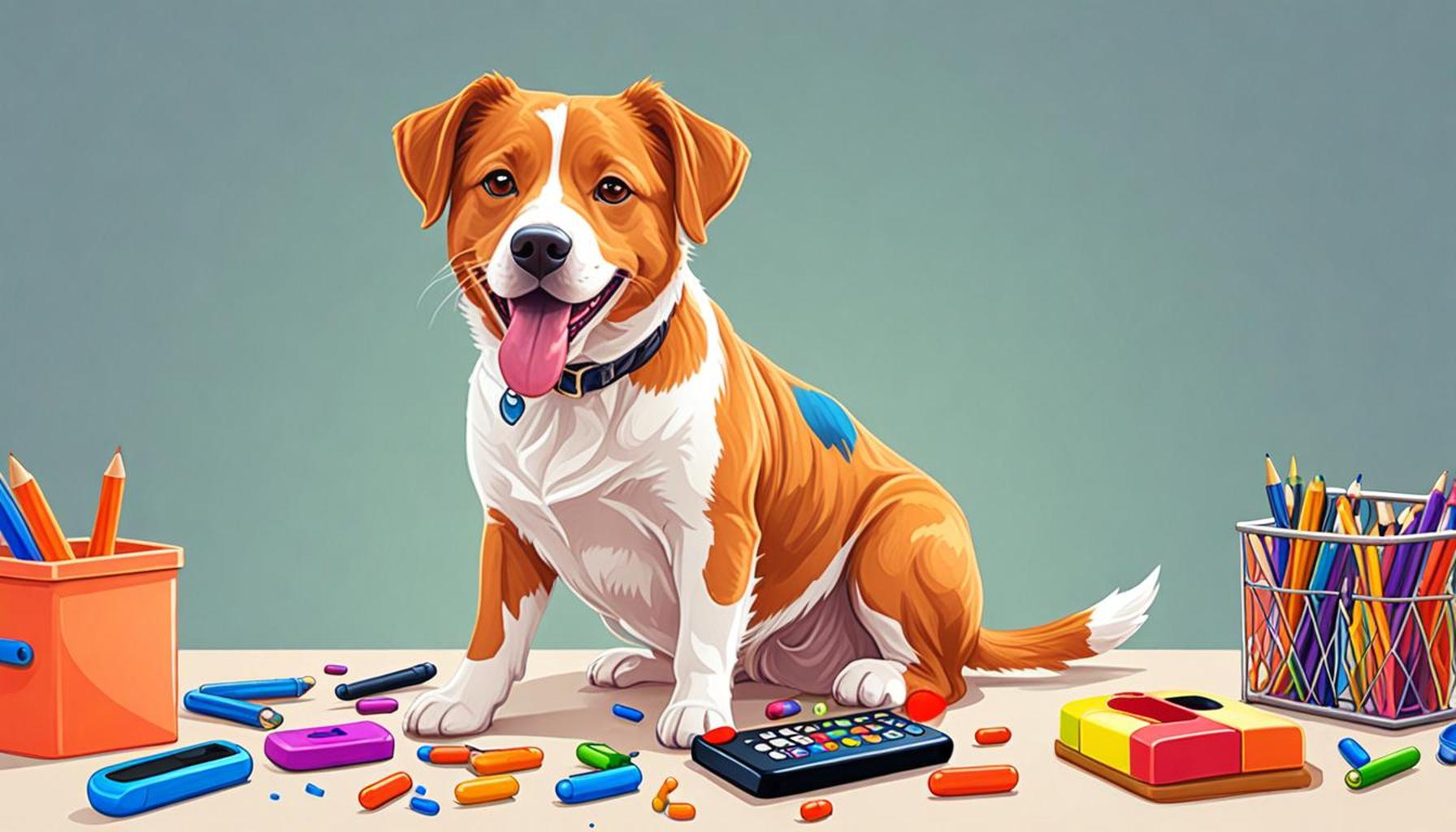Proven Puppy Training Tips Building a Solid Foundation Early

Welcoming a puppy into your home is an exciting adventure that comes with the responsibility of training and socializing your new furry friend. Proper training is essential not only for developing good behavior but also for ensuring a harmonious relationship between you and your puppy. Early training lays the groundwork for a well-adjusted adult dog, preventing future behavior problems that can disrupt family life.
Through effective communication and consistent reinforcement, you can help your puppy thrive. In this article, we’ll explore the top 5 tips for puppy training that will equip you with the tools necessary to establish a strong bond while navigating the challenges of puppyhood. This knowledge is not just for basic commands but is fundamental for fostering discipline and confidence in your pup.
By embracing these strategies, you’re setting the stage for a wonderful journey together. Dive into our proven tips that can transform your wild bundle of joy into a well-behaved companion!
DON’T MISS OUT: Click here to learn how to prepare your dog for hiking
Top 5 Tips for Training Puppies: Establishing a Solid Foundation from the Start
Training a puppy is an exciting yet challenging journey for new pet owners. Embarking on this adventure early is crucial, as it helps your furry friend grow into a well-behaved and confident dog. This article will delve into the top five tips to help you lay a solid foundation for successful puppy training, ensuring not only a delightful start to your pet-parent relationship but also a harmonious home life.

5. Use Positive Reinforcement Techniques
Positive reinforcement is widely recognized as a highly effective training method. By rewarding your puppy for good behavior, you create a positive association with the actions you want your puppy to repeat. This strategy not only promotes learning but also strengthens the bond between you and your puppy.
Consider the following types of rewards to motivate your puppy:
- Treats: Opt for small, tasty biscuits or any treat your puppy finds irresistible. Use these as immediate rewards to reinforce a successfully performed command.
- Praise: Verbal affirmations like “good job!” or “well done!” can be powerful motivators. Your voice’s positive tone conveys your approval and makes learning enjoyable.
- Playtime: Engaging in a game of fetch or tug-of-war after a productive training session can serve as the perfect reward, tapping into your puppy’s natural desire for play.
By consistently applying positive reinforcement, you create a fun learning environment while discouraging negative behaviors without resorting to punishment.
4. Be Consistent with Commands
Consistency is key in puppy training. Your puppy’s success hinges on understanding exactly what is expected, which necessitates the use of the same commands and cues for specific actions. Consistency prevents confusion and helps your puppy to learn faster.
To illustrate, if you wish to teach your puppy to “sit,” ensure you use the same command word and tone every time you issue this instruction. It’s also important that every member of your household employs the same vocabulary to avoid mixed signals. This uniformity is not only fair to the puppy but also streamlines the learning process.
By maintaining this consistency, your puppy is more likely to grasp commands quickly and respond appropriately, laying a sound training foundation.
3. Socialize Your Puppy Early
Socialization is crucial in preventing future behavioral issues and helping your puppy become a well-adjusted adult dog. Introducing your puppy to a variety of environments, people, and other animals early on is key to building their confidence and security in the world around them.
Here are effective socialization activities:
- Visit parks: Frequent trips to local parks allow your puppy to interact with other dogs and experience new sights and smells, which is invaluable for their development.
- Invite guests: Exposing your puppy to new people in a controlled setting helps them become comfortable with strangers, reducing fear and anxiety.
- Expose them to various sounds: Gradually introducing your puppy to normal household and environmental noises, like doorbells, vacuum cleaners, and traffic, helps desensitize them to potentially startling sounds.
Effective socialization leads to a puppy who feels secure in various situations, providing a solid framework for future well-being.
2. Start Training Early
Puppies are naturally curious and eager to learn, much like sponges that quickly absorb information. Therefore, starting training as soon as you bring your puppy home is beneficial in shaping their behavior and establishing key habits and routines.
Plan for short training sessions of 5 to 10 minutes to cater to your puppy’s limited attention span. Focus on teaching basic commands such as:
- Sit: A fundamental command that’s the building block for more complex behaviors.
- Stay: Mastering this command can prevent accidents and keep your puppy safe in potentially dangerous situations.
- Come: Ensures your puppy returns to you promptly, enhancing their safety and your control in various situations.
Early training provides a structured learning framework and boosts your puppy’s confidence, leading to a more obedient dog in the future.
1. Be Patient and Persistent
Patience and persistence stand as the cornerstone of successful puppy training. Understanding that each puppy learns at their own pace is crucial. Embrace the learning process, recognizing that mistakes are part of the journey rather than setbacks.
Here are strategies to maintain patience during training:
- Recognize progress: Celebrate each small victory, as these incremental successes contribute to long-term achievement.
- Take breaks: Avoid overwhelming your puppy or yourself. If you feel frustrated, taking a break can provide a fresh perspective and renewed energy upon returning to training.
- Stay consistent: Regular practice reinforces learning and cultivates a disciplined routine.
Your patience ensures a harmonious training process, ultimately resulting in a loyal and well-behaved companion.
In conclusion, establishing a solid foundation for training your puppy involves utilizing a combination of effective techniques and approaches. By adhering to these top five tips, you are well on your way to nurturing a happy and obedient canine friend, enriching both your lives with a rewarding bond built on trust and mutual understanding.
| Category | Details |
|---|---|
| Socialization | Exposing your puppy to different environments, people, and other animals is crucial for developing confidence and reducing fear-related behaviors later in life. |
| Positive Reinforcement | Using treats, praise, and affection as rewards encourages desired behaviors while establishing a bond between owner and pet, vital for effective training. |
| Consistency in Commands | Employing the same commands and tones will help your puppy understand expectations quicker, leading to faster learning and responsiveness. |
| Early Obedience Training | Starting basic commands like ‘sit’, ‘stay’, and ‘come’ establishes a strong foundation in obedience, ensuring safety and strengthening the human-animal bond. |
Training a puppy is not merely about teaching commands; it embodies the nurturing of a solid relationship built on trust and communication. Engaging with your puppy from a young age, particularly in socialization, opens up their world to diverse experiences which can literally shape their future behaviors. Social exposure can mitigate aggressive tendencies and misbehavior, demonstrating the profound importance of a well-rounded development. Positive reinforcement is another cornerstone that not only shapes behavior but enhances the connection with your puppy. Rather than instilling fear, the use of rewards creates a sense of achievement and joy in learning, making your training sessions something your puppy looks forward to.Consistency cannot be overstated. When commands are used faithfully, it establishes a common language between you and your puppy, expediting the training process. This uniformity, paired with early obedience training, lays a robust groundwork whereby your puppy learns to respond to commands swiftly, ensuring both their safety and the peace of mind of their owners.In essence, embarking on the journey of puppy training is a multifaceted endeavor where socialization, reinforcement, consistency, and obedience create a harmonious foundation for a well-rounded companion. Each aspect intertwines, nurturing not just a well-trained dog, but an emotionally secure one, eager to share life by your side.
DISCOVER MORE: Click here for tips on keeping your energetic dog happy in an apartment
Frequently Asked Questions about Training Puppy Dogs: Setting a Solid Foundation from the Start
1. When should I start training my puppy?
It is recommended to start training your puppy as soon as you bring them home, usually around eight weeks of age. Early training establishes good habits and socialization skills. Puppies at a young age are like sponges, absorbing new experiences and lessons quickly. Starting early can prevent behavioral issues down the line and promotes a well-adjusted adult dog.
2. What are the fundamental commands to teach a puppy?
The basic commands every puppy should learn include “sit,” “stay,” “come,” and “leave it.” These commands help in building a communicative bond between you and your pet and are essential for their safety. Consistent practice and positive reinforcement are key. Integrating these commands into daily play creates an engaging learning environment for your puppy.
3. How do I handle a puppy that bites or nips?
It’s natural for puppies to nip as they explore their surroundings and develop biting inhibition. If your puppy bites, offer a firm “no” or “ouch,” then redirect them to a toy suitable for biting. Teaching bite inhibition is crucial to prevent future aggression. Encourage more play with toys than with hands or clothing to reduce nipping behavior.
4. How can I effectively socialize my puppy?
Socialization is a vital part of training. Expose your puppy to different environments, people, and other animals while ensuring that each interaction is positive and controlled. Puppy classes are an excellent way to provide structured social experiences. Remember, the goal is to make your puppy feel comfortable and confident in diverse situations.
5. What if my puppy doesn’t seem to learn quickly?
Each puppy learns at their own pace. If you notice that your puppy is not picking up commands quickly, ensure that you are using positive reinforcement, consistency, and patience in your training approach. Keep training sessions short and fun to maintain their interest. If concerns persist, consider consulting a professional trainer for tailored advice for your puppy’s needs.
LEARN MORE: Click here for stress-free puppy socialization tips
Conclusion: Laying a Strong Foundation for Puppy Training
Training a puppy is a key responsibility that, when done correctly, results in a well-adjusted and happy canine companion. Throughout this article, we have examined the essential tips for laying a strong foundation in your puppy’s early development stages. From the importance of starting training early and setting clear boundaries, to the methodical consistency that is crucial in reinforcing behaviors, each component plays a significant role in shaping a puppy’s future.
Patience is a virtue, as puppies will have moments of youthful exuberance and lapses in attention. However, by remaining calm and consistent, owners can instill lifelong habits and obedience. Positive reinforcement, rather than punitive measures, ensures training sessions are engaging and enjoyable, fostering a loving bond between the owner and puppy. Socialization also deserves emphasis; providing exposure to various environments and individuals helps mitigate fear and aggression, contributing to a well-rounded temperament.
Acknowledging that each breed and individual puppy may have unique training requirements is another vital consideration. Owners should be prepared to adapt their techniques, tailoring training approaches that cater specifically to their puppy’s personality and needs.
In conclusion, investing time and effort into establishing a solid training foundation for your puppy reaps benefits that extend far beyond obedience. It strengthens the human-canine bond and ensures your puppy grows into a well-mannered adult dog. By equipping yourself with knowledge and patience, and embracing the journey of training, you can enjoy a rewarding experience that profoundly impacts both your life and your puppy’s. This foundational stage is just the beginning—a stepping stone towards a fulfilling and harmonious companionship filled with understanding and mutual respect.



